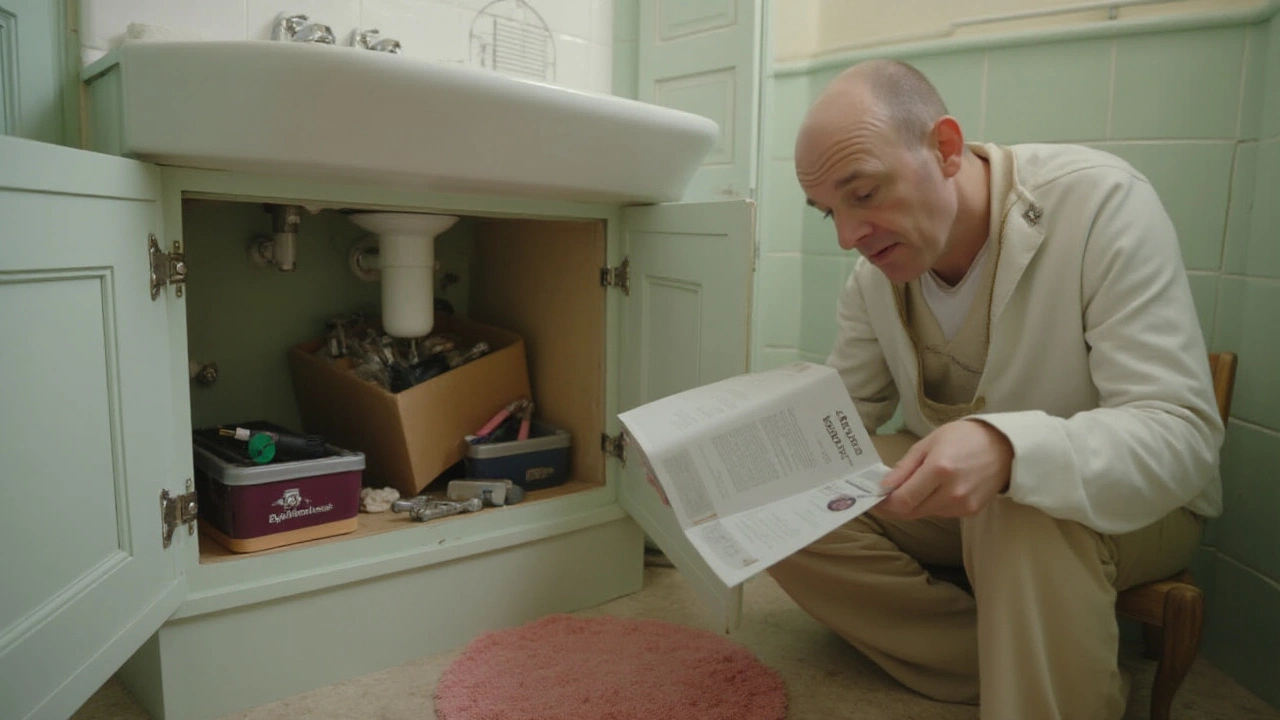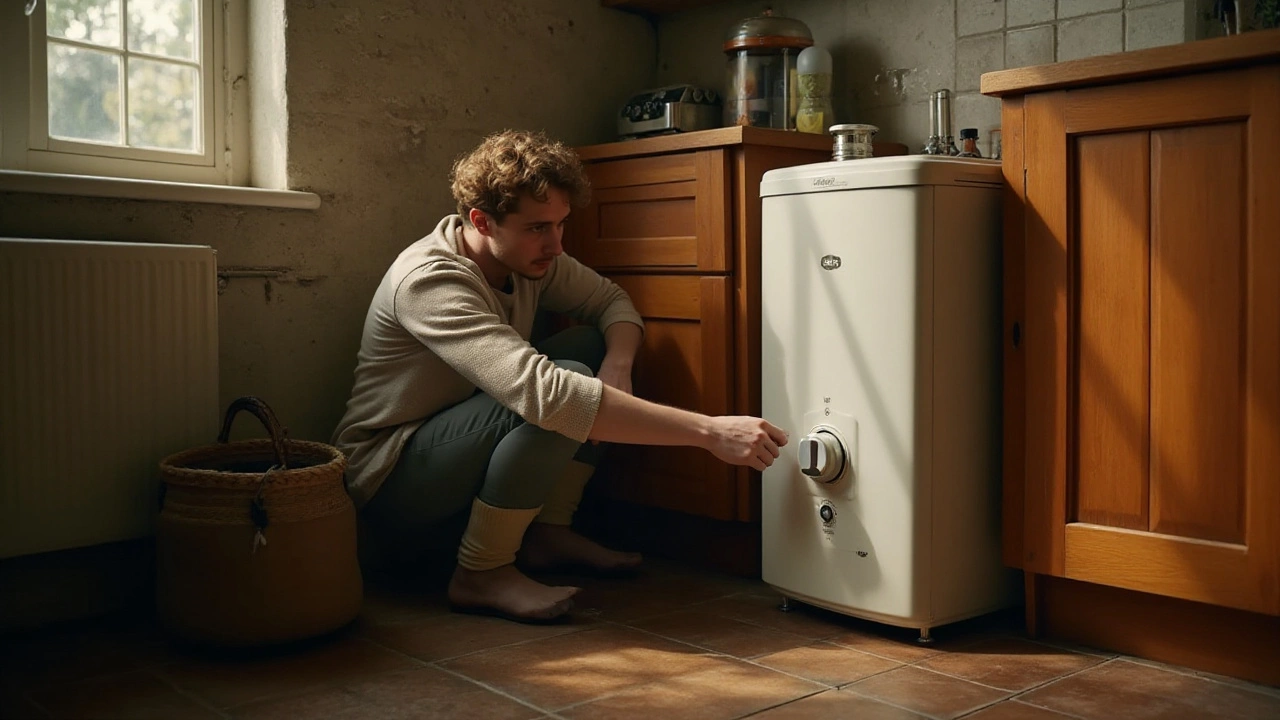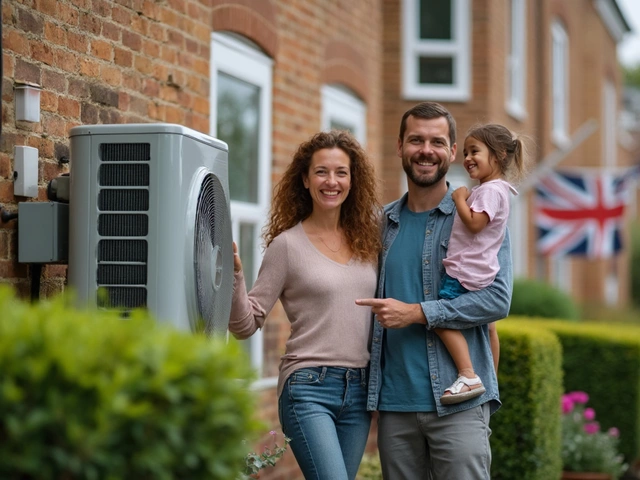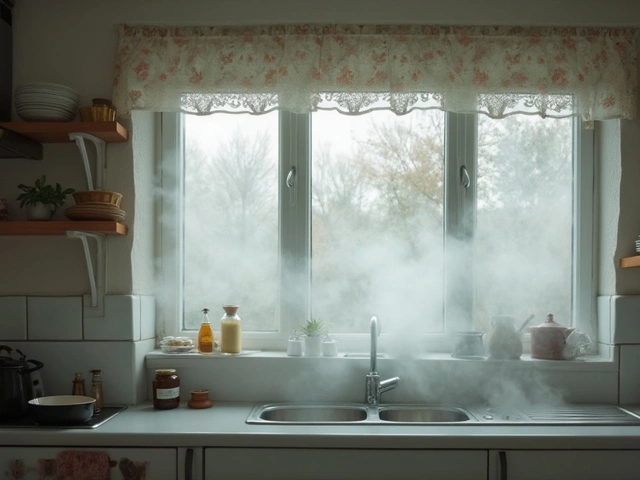The water heater is one of those hidden heroes in our homes, working tirelessly behind the scenes to supply us with hot water for showers, dishwashing, and more. However, as with any appliance, hiccups do occur. One commonly encountered feature during these minor crises is the reset button; a small and simple-seeming solution to a problem that might not be quite as straightforward.
If you've ever found yourself standing in front of your water heater, contemplating the implications of pressing that reset button, you're not alone. Understanding the mechanics and the reasons why the reset might be necessary can empower you to make an informed decision. Is it safe to press? Could it be a temporary fix or a sign of a deeper issue? Let's delve into the reality behind this little red button and when pressing it can be a help or a hindrance.
- Decoding the Reset Button
- When to Press That Button
- Potential Risks Involved
- DIY Troubleshooting Tips
- When to Call a Professional
Decoding the Reset Button
In the realm of water heaters, the reset button is often referred to as a safety measure, a failsafe mechanism built into the unit. But what exactly does it do? The reset button, also known as the high-temperature cutoff switch, is essentially a safeguard designed to prevent the heater from becoming too hot, which can occur due to a variety of reasons like a failed thermostat or heating element. When the water temperature surpasses a safe level, the reset button trips, breaking the circuit and stopping the water from heating further. It acts as a critical intervention to ensure the safety of both the appliance and its users.
Understanding why a reset button might trip is crucial. It can be an indicator of problems needing attention. For instance, if your water heater continuously needs resets, it could mean that the thermostat isn't working correctly or the heating element has issues. This brings us to an important juncture—learning to listen to what your appliance is telling you can save you from potential safety hazards or damage to the unit. A properly functioning water heater shouldn’t require frequent resets under normal conditions. Persistent problems may suggest underlying faults demanding professional attention.
While it might be tempting to hit that button and restore hot water, remember it is there for your protection. It’s worth noting that pressing the reset button resets the circuit and, in doing so, temporarily solves your issue without addressing the root cause. Think of it as a temporary relief from a symptom rather than a cure for the disease. Water heater manufacturers frequently recommend seeking professional advice if your unit becomes overly dependent on resets. According to the American Council for an Energy-Efficient Economy, upgrading to a newer, more energy-efficient model might provide a more long-term solution, reducing both energy consumption and the frequency of such issues.
In the world of modern appliances, safety and efficiency tend to go hand-in-hand. A single tripped reset button does not signal doom, but ignoring consistent trips can lead to serious consequences. To protect your household, maintain your unit, clean it regularly, and never hesitate to call a technician when the resets become habitual. Balancing the act of immediate solution with long-term prevention is key for a happy and healthy appliance, much like an individual’s well-being. Often, paying attention to small signs can prevent big troubles down the line.
When to Press That Button
For many homeowners, the notion of pressing a button to resolve a significant issue with a water heater might seem a little daunting at first. The mysterious reset button, often colored red and strategically placed by manufacturers, offers an enticing first line of defense against unexpected cold showers. So when should you actually consider pressing it? Understanding its purpose is crucial. The reset button is part of a safety mechanism known as the high-limit safety thermostat. It’s designed to cut off power to the water heater elements if the water temperature rises to a dangerous level, typically above 180 degrees Fahrenheit. This mechanism prevents the water from getting too hot and protects against pressure buildup in the tank. So, if your water suddenly becomes scalding hot or the heater doesn’t work at all, the button might have tripped and resetting it could restore functionality.
Before you decide to press the reset button, it's important to first ascertain the possible causes of the malfunction. Often, water heaters trip without warning due to factors such as power surges, thermal overloads, or a malfunctioning thermostat. If you’ve just experienced a power outage, a reset might be all it takes. However, if your water heater frequently trips or fails to heat water consistently, it might be indicating a larger underlying issue. You should ensure there’s no visible disruption in the circuit breaker, and it's prudent to check if the thermostat is accurately set and regulated.
Signs It's Safe to Reset
If after troubleshooting, you find that there's no overt electrical problem and the water heater seems intact, you can try pressing the reset button. However, it is generally advisable to do this only once or twice to see if the reset resolves the issue. Repeatedly relying on this button without identifying the cause can be risky. Persistent problems after multiple reset attempts may indicate serious complications like a failing thermostat or burnt-out heating element. These are best left to the professionals. As a general precaution, it is also wise to scan for leaks or corrosion around the tank as these often lead to more severe issues.
"The reset button is a useful tool for minor adjustments, but it's not a cure-all solution," says Jennifer Jenkins, a seasoned HVAC technician. "If you're frequently pressing it, you're likely ignoring a bigger electrical or mechanical problem."
Another time it's typically safe to press the reset button is after servicing your water heater. Technicians may leave the heater off, in which case resetting it post-service is routine to resume normal operations.
- Always inspect the water heater and its surroundings for faults.
- Check the circuit breaker before pressing the reset.
- Limit resets to once or twice if issues persist.
- Contact professionals for ongoing or serious heater problems.
Remember, the ability to reset your water heater is a helpful tool, but not a complete problem solver. Using this button should be accompanied by a proactive assessment of your heater’s functioning to ensure both your comfort and safety. If you've gone through these steps and the water remains cold or erratic behavior continues, it might be time to call in a professional for a comprehensive evaluation. Keeping your heater in good condition ensures long-term reliability and effectiveness.

Potential Risks Involved
When considering pressing the reset button on your water heater, it’s crucial to thoroughly understand the potential risks involved. This button essentially acts as a safety device, designed to trip when the water temperature within the heater unit exceeds a safe threshold, which is typically around 120 degrees Fahrenheit. If the water in your heater is getting too hot, pressing the reset button is a way to halt the immediate encroachment of danger — yet, it also can mask the root cause of a potentially larger problem.
Continuously pressing the reset button without identifying why it was tripped in the first place might lead to repeated issues, signaling a malfunctioning thermostat or a faulty heating element. Such malfunctions could pose more significant risks, including overheating which could damage the water heater or lead to more severe scenarios such as scalding accidents. It's crucial to ensure safety first, and a reset button is not a remedy; it's a warning.
Another potential risk is the chance of tripping circuit breakers. This can occur if the water heater is putting undue stress on your home's electrical system, potentially leading to electrical hazards or power issues throughout the household. Constant resetting might also indicate the presence of electrical problems within the unit itself, which could be dangerous if ignored or improperly handled. Seeking assistance from an experienced professional in such cases becomes paramount.
"Regular maintenance of water heaters ensures longevity and prevents unexpected hazards," - Household Appliances Safety Guide, 2022 Edition.
Though pressing the reset button appears to be an easy solution, it's important to understand its design as a temporary measure. The task of fixing a heater should not be equated to troubleshooting a microwave or a toaster, as the stakes concerning water and electricity, both present here, can be significantly higher. If frequent resetting is needed, it's a signal that professional evaluation is not just advisable but essential. Therefore, treat every reset as an alert message from your water heater, indicating a deeper inspection is needed.
DIY Troubleshooting Tips
Tackling issues with your water heater can seem daunting, but sometimes, a bit of DIY know-how can save the day. Before reaching for the phone to call in the pros, there are a few steps you can try to address the problem yourself. The reset button might seem tempting, but understanding its role is crucial. It acts as a safety mechanism, cutting off power to prevent overheating—a pretty important task. This little button is often pushed when the system's safety device identifies a problem that needs correction before it can safely operate again.
Begin by examining your surroundings. Check if your water heater's power supply is active. Sometimes, it might not be the heater itself but an issue with the power outlet. Also, verify if the circuit breaker hasn't tripped. If the breaker resets and trips again, it's wise to halt your investigation there and consult an expert. For electric units, ensure all components are dry and there are no visible leaks. Leaks can often indicate more significant problems that require a professional touch.
Regular maintenance forms the backbone of preventing problems. Sediment can build up at the bottom of your tank, impacting its efficiency and causing issues. Flushing it annually can help. To do this, connect a garden hose to the drain valve and allow it to run into a sink or out to your garden—just ensure it's a safe area to drain hot water. Remember, patience is key here; rushing through can cause complications.
Another tip is to inspect your thermostat. Set to the desired temperature (usually around 120 degrees Fahrenheit for comfort and safety), it can sometimes get knocked out of place, affecting the water temperature. Adjust cautiously and wait to see if this resolves the issue. If the reset keeps tripping, it could indicate something faulty, signaling the need for a professional.
Safety considerations are essential here. Working with water heaters involves risks, given their electrical and gas connections, and pressure vulnerabilities. Never compromise on your safety or anyone else's in the household. If unsure, always opt for calling a professional to handle things beyond your DIY capacity. Many are more than willing to give advice over the phone if it's a simple fix or guidance on what to check first. As one experienced plumber put it,
"Routine checks and small maintenance on your heater can make a world of difference in extending its lifespan and ensuring its safety."
Case in point: a study showed that homeowners who perform regular DIY checks and maintenance report fewer instances of major repairs, saving on average 10% annually in repair costs. So, while it can be exhilarating to fix something yourself, always balance it with caution and knowledge, ensuring your water heater serves you well for years to come.

When to Call a Professional
There comes a time when every homeowner must make the call to enlist expert help. While the reset button on your water heater can provide a temporary solution for minor problems, it often indicates a bigger issue. If your heater keeps tripping the reset button, it may be a sign that it’s time to call in a professional. Water heaters contain complex components that ensure safety and functionality, and a continual issue might highlight a dangerous or inefficiency problem that needs expert attention.
Professional help is not just about getting things working again. It’s also about ensuring the safety of your home and its inhabitants. One critical issue that professionals can address is the thermostat's proper functioning. If it's faulty, it could lead to overheating and create a risk of scalding. Professionals have the necessary tools and knowledge to diagnose such problems, which may be beyond the understanding of a regular homeowner.
"When in doubt, call it out. A small issue may cascade into a large repair problem if not assessed correctly," suggests John Baker, an experience plumber with over 20 years in the industry.
Calling a professional is not just for repairs; it is also crucial for proper maintenance. Regular checks can extend the lifespan of your unit, improve efficiency, and prevent costly repairs. During these routine inspections, experts can check elements that are not easily accessible or understandable by the layperson, like the anode rod. This component is critical as it prevents rust and corrosion inside the tank by using a process called electrochemical reaction. Replacing it periodically can save you from replacing the entire heater, saving you money and hassle in the long run.
Signs You Shouldn't Ignore
There are certain unmistakable signs that you definitely shouldn’t ignore when it comes to your water heater. If you notice any leaks, odd noises, or inconsistent water temperature, it’s time to pick up that phone. The ticking noise you hear could be sediment build-up requiring flushing or a more serious electrical issue. Let’s face it, no one wants to take a frigid shower first thing in the morning!
To make the best decision, it’s important to figure out what sort of service you might require. Is it a basic repair, a functionality check, or a complete replacement needed? Often, a professional can offer insights that you might not have considered. The trade-off is clear: the small expense of a house call might save you from an expensive replacement later.







